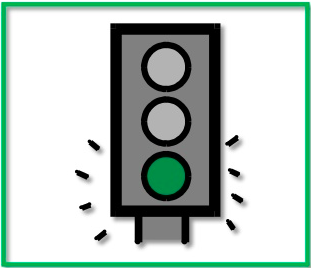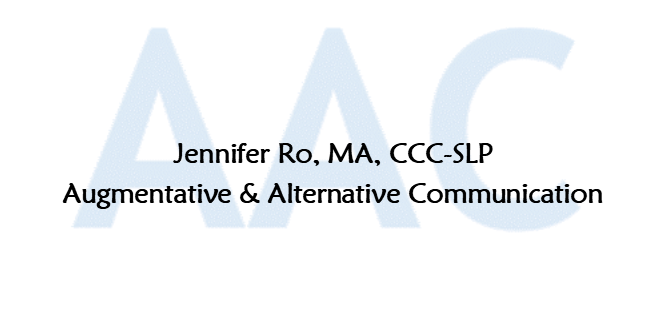Therapeutic Home Activities with Non-Speaking Children - Part II
Therapeutic Time at Home with Non-Speaking Children
Jennifer Ro is a Speech and Language Pathologist and Augmentative and Alternative Communication specialist based in Georgia, here she shares some tips for spending time at home with non-speaking children and successfully working on communication and language development.
This blog post is part two in a two part series. The first part is here and features Jackie Bartell, Education Consultant and DIR/Floortime Expert from ICDL.
The importance of addressing the needs of our non-speaking children at home for prolonged periods, away from their daily routine, schools and therapy centers is phenomenally important because this is a time of uncertainty for all of us - all our families and all of our service providers.
So how are we going to help our families for these prolonged periods, especially our families who have nonverbal children or actually who have just a few words, and were just starting to communicate. I'm going to share some tips with you and but first and foremost the first point is just have fun with your children, having fun is the basis for communication. If you think about it communication really is the process of sharing our ideas and our thoughts and if you're not having fun or if you're engaged in something that you aren't necessarily enjoying there's really no reason to communicate.
So bottom line, just be what you usually are as a parent, support your child and have a ton of fun and when you're having fun here's the first tip: respond respond respond. Some of you guys might ask "what does that look like? How do I respond respond respond when my child isn't really interested?". Well the goal is finding those activities that are most motivating and interesting to your child. As a whole what you need to watch for when you're responding is those nonverbal pieces of communication. So you want to look at is - is your child looking at the activity or the object that you're holding? Is your child leaning forward? Is your child looking at you? If you see any of those items and you have an inkling in your head what your child is trying to communicate to you - you respond to it right away.
The priority goal for a child at the before words level, children who are non-verbal, who are just developing some initial words, is really to have them feel as if they're a competent communicator. That could be through nonverbal means or even some very early means like using pictures or even looking at pictures that you have at home.
This challenges our idea of communication a little bit, because as we get older we think communication means kids speaking sentences. You have to take it back a notch and just be in tune with your child. Remember that communication is the act of sharing your thoughts and sharing your feelings. You'll know you're having fun, it is when the child is having fun and when you as the parent are having fun as well.
So essentially you really want to get your child enjoying that interaction and you want your child wanting more of it, if they want more of it then there's a reason to communicate. It's looking at things right, if you see them looking at a train you say "train! let's make it go!". Don't worry about books or playing dolls look for sensory play, experiential activities and motor activities.
Sensory play doesn't just mean messy play, it means motor, it means whole body, it means jumping and crashing and just having fun rolling and dancing and spinning and all of those really really rewarding physical play activities. That gonna feed right into communication of fun and wanting more. Those sensory-motor activities can be what's absolutely fun and most motivating for really early communicators. So for instance it doesn't have to be messy play, but if you've got a ball that you're rolling around - you see the child looking at the ball you say "ball" and then you roll it to them, and you've just acknowledged what they've communicated non-verbally. This is you teaching them communication within the context of fun and enjoying that interaction with the child.
So for the second tip think of a few words that you are working on. This is taking it a little bit further beyond if you truly want to work on conventional forms of communication and really want to target some certain words for kids who are already showing some of that joint attention and joint engagement. You need to keep it simple as you're trying this one out; you have one goal and one word to focus one. For example you've got this ball - if you're not sure that the child knows what the word ball means they look at the ball you say "ball" and then you throw it. So then you're both enjoying running after the ball and then you're you're both passing it or or engaging in some sort of joint play.
One important thing that I do want you to remember is that nouns like ball or puppet or baby or bottle or spoon can only get you so far with language and communication. So if you're fairly certain that your child knows these nouns or these objects do not forget about core vocabulary. If you haven't heard of the term core vocabulary (and this in the field of AAC) core vocabulary is essentially those words that we use frequently throughout the day and then they can generally be used in any activity possible.
 So if you feel your child already knows what the term ball is take it up a notch and then focus on the word go. If your child looks at the ball and you think oh they want me to throw that ball, they've got to tell me go. Then the child looks at the ball, and looks at you and you say "go!" and then you throw the ball and have that fun moment! You can do this either verbally or you can use pictures, and what I would really suggest is if you've got school-aged children or if you've got private therapists who have sent home pictures with your child use those pictures that they sent. For example where I work a lot of the times we use this picture for the word go. This is a green light, and remember for these early communicators, the focus is not having them touch the word go or say the word go you're wanting to give them meaning. So as you're throwing the ball periodically you might add in a picture support. For example you're showing them a ball - they look at the ball - then you say go (and show the picture) and then you throw the ball. The child doesn't have to do anything because they've already communicated to you go by looking at the ball.
So if you feel your child already knows what the term ball is take it up a notch and then focus on the word go. If your child looks at the ball and you think oh they want me to throw that ball, they've got to tell me go. Then the child looks at the ball, and looks at you and you say "go!" and then you throw the ball and have that fun moment! You can do this either verbally or you can use pictures, and what I would really suggest is if you've got school-aged children or if you've got private therapists who have sent home pictures with your child use those pictures that they sent. For example where I work a lot of the times we use this picture for the word go. This is a green light, and remember for these early communicators, the focus is not having them touch the word go or say the word go you're wanting to give them meaning. So as you're throwing the ball periodically you might add in a picture support. For example you're showing them a ball - they look at the ball - then you say go (and show the picture) and then you throw the ball. The child doesn't have to do anything because they've already communicated to you go by looking at the ball.
- Focus only on one word
- Do not demand some sort of a specific response
- Give meaning to the communication that your child is already producing
- Do not just name items around the house but also actions that are meaningful
- Embed everything in relationship and the moment of play with the parent
STAR Institute is a 501(c)(3) and the Covid-19 situation has hit us hard. Help us do more, serve more and reach more people.
If you are in a position to help please consider a $20 donation today: Donate Now

